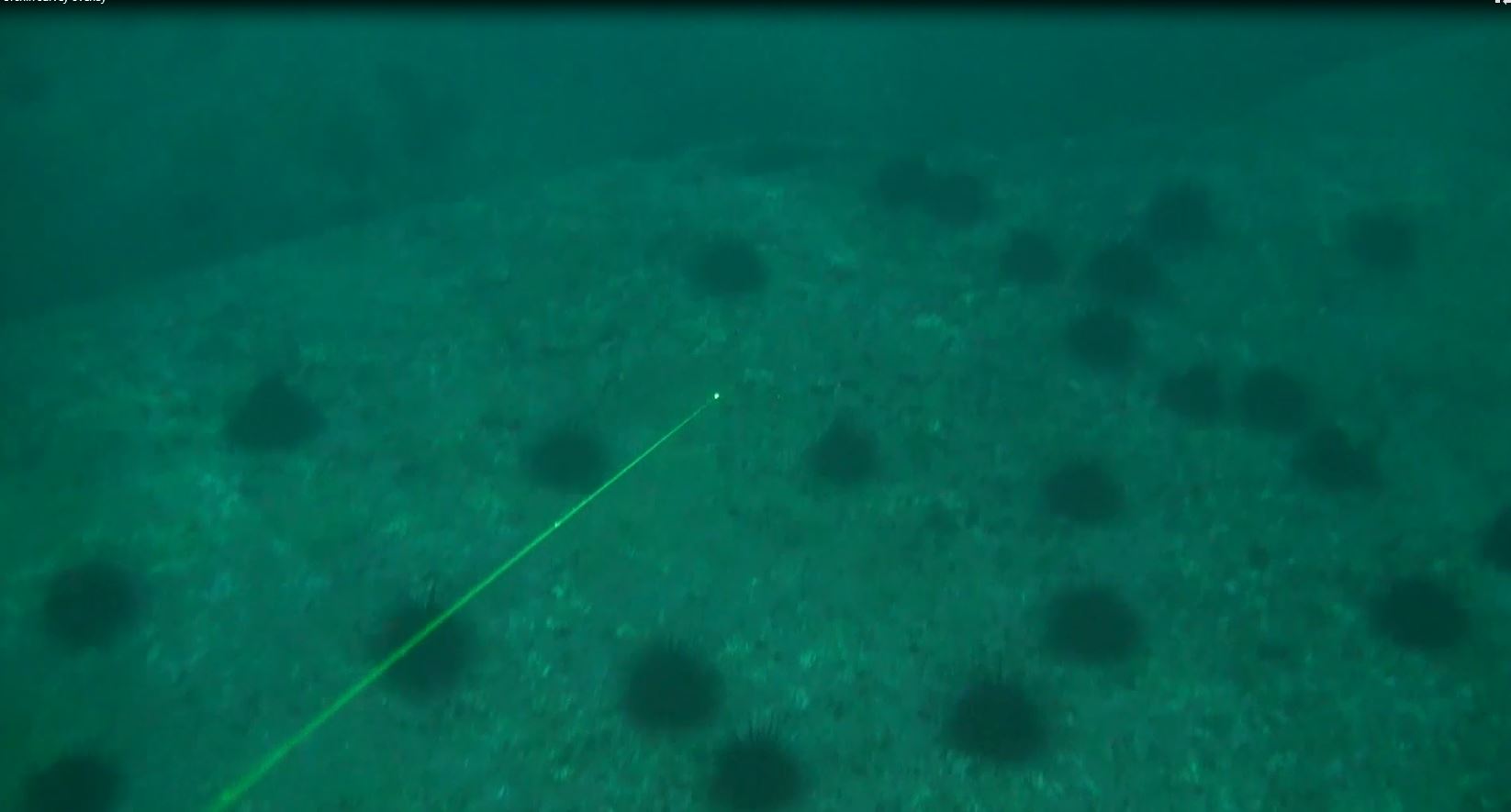
IMAS surveys of invasive Long-spined Sea Urchins on reefs along Tasmania’s East Coast have measured the size of increases in the urchin population and the barren areas they create by overgrazing kelp beds.
Led by Principal Investigator Dr Scott Ling, researchers conducted SCUBA and towed-underwater-video surveys spanning 156 sites across 13 East Coast locations between Eddystone Point and Recherche Bay, repeating a baseline survey carried out in 2001/02.
A report on the latest survey released today found that since 1978, when a single Long‑spined Sea Urchin was found in St. Helens, the Tasmanian population has grown to an estimated 20 million.
For eastern Tasmania, over the last 15-years the urchin population has grown from an estimated 11 million to more than 18 million, with an average increase in urchins of 170 tonnes per annum.
Along the open coastline from Eddystone Point to Tasman Island, urchin barrens now cover an estimated 15 per cent of reefs at depths of 4-40 metres, up from 3 per cent in 2001/02.
Dr Ling said the initial range-extension of the Long-spined Urchin from New South Wales to Tasmania is the result of warming coastal waters primarily driven by a strengthening of the East Australian Current.
“Ongoing climate change has made the region more and more favourable for Long‑spined Sea Urchins,” Dr Ling said
“In the absence of high abundances of large predators such as rock lobsters, urchins have established in large numbers and are destructively overgrazing kelp beds.
“The 18-million urchins now on the East Coast have largely transformed some reefs to barren grounds that are essentially underwater deserts devoid of other marine life, including important commercial species such as lobsters and abalone.
(Video, below: Dr Ling talking about the urchin re-survey)
Dr Ling said fisheries managers have already implemented a range of measures, backed by IMAS research, to address the urchin problem.
“The measures underway include increasing the abundance of rock lobster on the East Coast by cutting the commercial and recreational catch, and translocating lobsters from the south west to the East Coast to accelerate population rebuilding.
“Rebuilding the stock of large lobsters is important because they are the main predator of urchins in Tasmanian waters, so rebuilding their numbers can prevent kelp beds collapsing to barren grounds.
“The development of an urchin fishing industry for human consumption of the roe is another approach being pursued, with catches increasing to over 100 tonnes over the last year.
“Each of these strategies are attempting to stop healthy reef turning into barrens. Reversing existing urchin barrens is more difficult and broad-scale culling is one option that needs to be considered.
“A range of culling options are possible, including quickliming barren grounds, which has been used to good effect overseas, and co-ordinated campaigns by abalone and volunteer divers smashing urchins on the seafloor can also be effective in shallower water.
“Although it takes many urchins to overgraze a kelp bed it takes relatively few to maintain a barren once it’s formed, so prevention by saving remnant kelp beds is definitely better than trying to find a cure.
“As urchins can also live for more than 40 years, once they establish barren grounds the reefs can be locked-in to this collapsed state for the long-term unless action is taken,” Dr Ling said.
(Video, below: An animated video about the urchins by renowned cartoonist Gary Clark, creator of The Swamp)